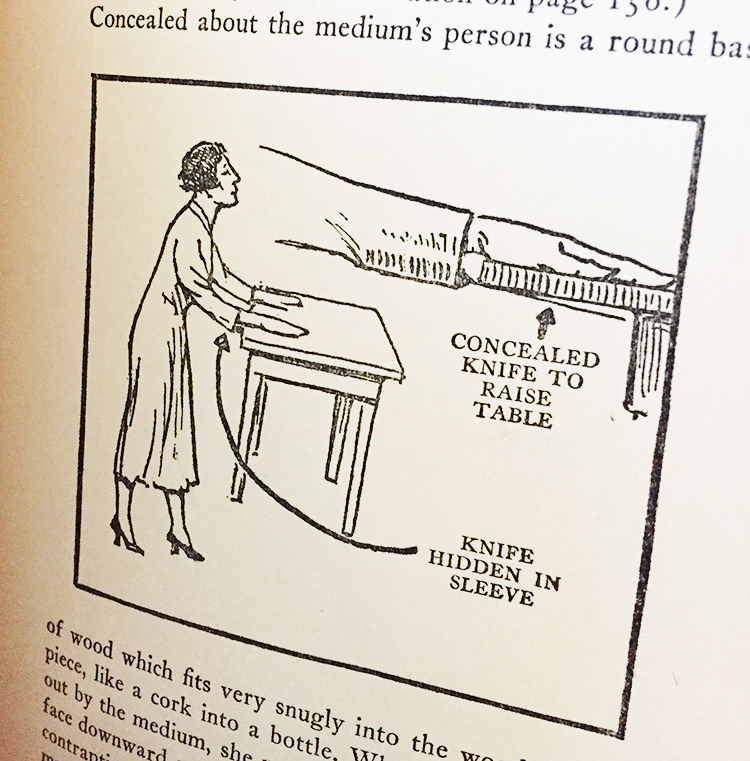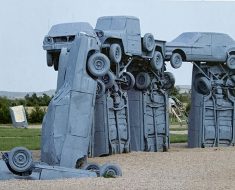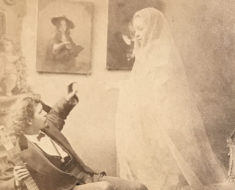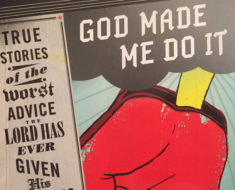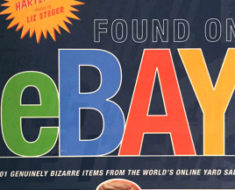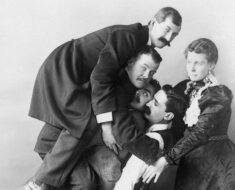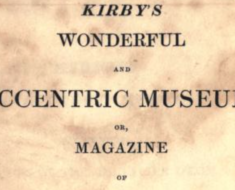Spiritualism gained popularity in the latter half of the 19th century and remained popular through the 1930s. During this time, mediums everywhere claimed to be able to communicate with the dead. Many believed in their abilities, such as Sir Arthur Conan Doyle, who advocated the movement across Europe and America.
However, not everyone was fooled. Harry Houdini performed many medium tricks early in his career, but later fought to expose every charlatan he could.
Mediums would use a variety of tricks to rap tables, levitate tables, and produce other effects that convinced people that a ghostly presence was among them.
In the 1932 book, Spook Crooks!: Exposing the Secrets of the Prophet-eers who Conduct Our Wickedest Industry, author Julien Proskauer discusses the ease in which mediums could make a table rise during a séance.
Table tipping, from Spook Crooks, by Julien Proskauer (1928)
By concealing a knife in the sleeve of his coat, if the medium is a man, or in the sleeve of her blouse, if a woman, if can be done.
They use either a kitchen table which does not weigh more than a few pounds, or a card table, which is exceptionally light. They slide the knife under the protruding edge of the table, place the tips of their fingers on the table exactly as shown in the drawing, maneuver the knife under the edge, and lift up the arms.
It can be done with a fork, as well as a knife, provided the prongs point upwards.
Proskauer also suggests a medium could have a small nail in the edge the table, which a wedding ring could be hooked onto as the fingers appear to rest normally on the table.
In Dunninger’s Complete Encyclopedia of Magic, Joseph Dunninger devotes several illustrated pages to “Tricks of Mediums.” Table can rock, dance, and jump in dark rooms with the help of a couple accomplices wearing a harness, fitted with a tool and concealed by a vest to create the effect.
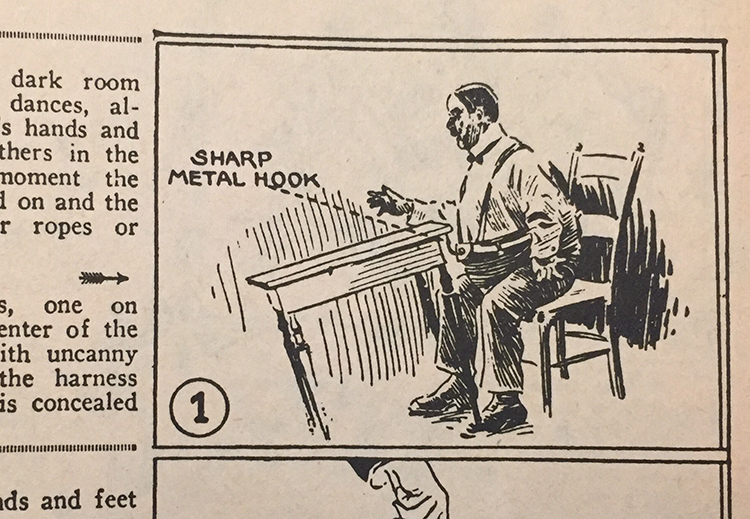
Using a harness to tip a table, from Dunninger’s Complete Encyclopedia of Magic (1963)
He also explains a simple effect where a table appears to rise at a magician’s will:
“This piece of furniture is most innocent in appearance, being of the usual four-legged type, quaint in appearance, and made entirely of wood, free from the usual drapes or fringes, affixed to the average magician’s paraphernalia. Amid the sounds of weird music and the possible beating of a tom-tom, the wizard assumes a mystic pose.”
From there, the magician simply embellishes the showmanship and the table mysteriously tilts back on two legs, untouched.
“With a wave of the wizard’s satanic fingers, the table sinks downward,” Dunninger adds.
The trick, of course, requires no wizardry or satanic aid. Just an assistant supplying the forces from beyond the stage by pulling thin, strong threads.
It’s an effect that impressed on a magician’s stage, but would easily apply to the séance. As Dunninger states, “Showmanship is, as ever, the greatest asset.”
For many, it even brought the dead back to life.
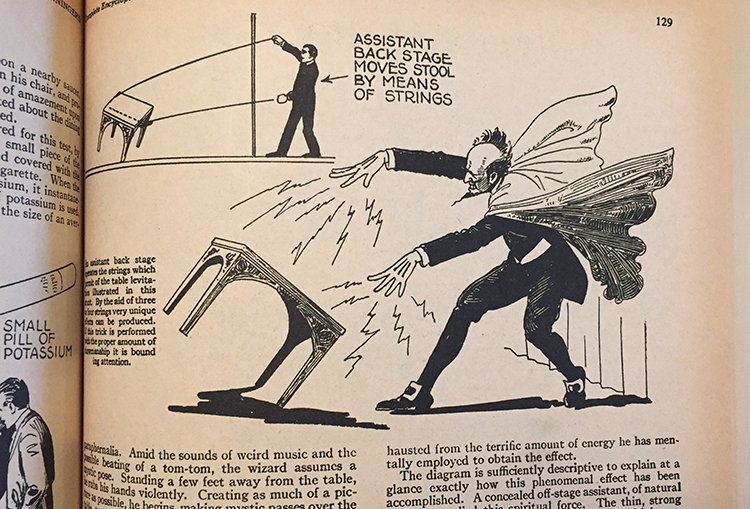
How magicians levitate a table, from Dunninger’s Complete Encyclopedia of Magic (1963)

